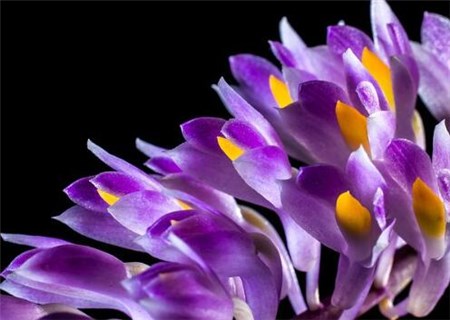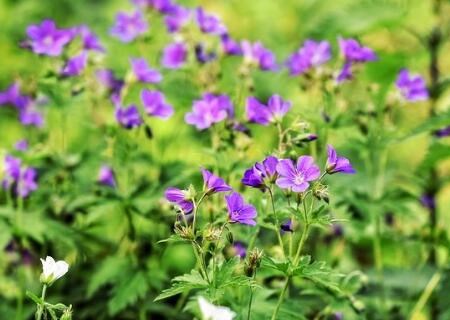What are the methods of planting potted prickly ash seeds? How to control diseases and insect pests?
Pepper is a commonly used spice, in fact, pepper can also be potted, pepper because the leaves are green and dense with peculiar fragrance, the trunk is Qiu qu, which constitutes the unique ornamental of pepper bonsai. So do you know what are the methods of planting potted prickly ash seeds? How to control diseases and insect pests?

I. seed planting method of potted Zanthoxylum bungeanum
1. Seed storage and germination:
Zanthoxylum bungeanum seed shell is hard, oily, not easy to absorb water, germination is more difficult, must be degreased. For autumn sowing, the seeds can be sowed in alkaline water (1 kg of seeds with 25 grams of alkaline surface, submerged in water), soak for 2 days, scrub the seed coat oil, fish out and sow the seeds.
Generally, 15 minutes before sowing, the stored seeds are removed from sundries and placed in a sunny place with a height of 30 centimeters, sprinkled with water and covered with plastic sheet. they are turned over every 2 days and can be sown when most of the seeds germinate.
2. Watering: water well for overwintering, sprouting and fruit growth for three times. It should be combined with fertilization and watering to give full play to the fertilizer effect and promote plant growth and development. Resistant to drought, water should not be watered too much!
3. Fertilization: chemical fertilizer should be applied during flowering and fruit expansion period in order to increase fruit setting rate and promote fruit growth.
4. Shaping and pruning:
Zanthoxylum bungeanum likes light, strong branching ability, strong fruiting ability of mother branches, through pruning, concentrated nutrition, and improving light in order to grow a lot of pepper!
Second, how to control diseases and insect pests of Zanthoxylum bungeanum
Common diseases of Chinese prickly ash
1. Prickly ash root rot
① symptom
Zanthoxylum bungeanum root rot is a kind of soil-borne disease, which usually begins from April to June, and is the most serious from June to August. The main pathogen is Fusarium oxysporum. The susceptible plants showed root rot, accompanied by abnormal odor, the root bark was separated from xylem, the xylem was black, the aboveground leaves were small, the leaves lost green, and the seedlings, adult plants and mature plants could be infected with the disease. but it mainly occurs in nurseries and adult prickly ash orchards. When the damage is serious, the whole plant will die.
② prevention and treatment methods
Strengthen the management of Zanthoxylum bungeanum garden, plant density is reasonable, turn the soil deeply, maintain the soil aeration ability, water and fertilize in time. Disinfect the soil of the nursery with chemicals, strengthen inspection, and immediately remove and destroy the diseased plants; in April, when the pathogen begins to infect, irrigate the adult trees with 15% vermicellin wettable powder 300 times 800 times or root rotting net 250 times liquid, which can effectively avoid the occurrence of diseases. In the infected pepper garden, the diseased plants and diseased roots were removed and destroyed centrally to reduce the accumulation of pathogens in the pepper garden.
2. Prickly ash rust
① symptom
The pathogen of Zanthoxylum bungeanum rust is Zanthoxylum bungeanum, which generally begins to occur in late June. Heavy rainfall in autumn, frequent rainfall will aggravate the occurrence of the disease. The disease is mainly harmful to leaves, which can reduce the accumulation of organic matter. Water-immersed chlorotic spots appeared on the front of leaves in the early stage, dark brown necrotic spots developed in the later stage, and orange summer spores appeared in the corresponding parts of the back of leaves. When the disease is serious, it can lead to premature defoliation of Chinese prickly ash, affecting the quality and yield of Chinese prickly ash.
② prevention and treatment methods
Gou Jiao and other relatively resistant varieties can be selected to replace susceptible varieties such as Hancheng Dahongpao or mixed planting, or disease-resistant varieties can be cultivated by asexual reproduction or grafting. Strengthen the management of Zanthoxylum bungeanum garden, enhance the tree potential and improve the plant resistance. Ploughing and weeding can reduce the consumption of soil nutrients and promote the healthy growth of plants. Proper topdressing, water supply and pruning can improve the ventilation and light transmission conditions of prickly ash garden. In early June, 1 ∶ 1 ∶ Bordeaux solution was sprayed to prevent the disease. The diseased plants can be sprayed with 1 ∶ 2 ∶ 200 Bordeaux solution, 15% Tetrandrine wettable powder 1000-fold solution, 65% mancozeb wettable powder 400-500 times solution and so on. In the late autumn, after harvesting the fallen leaves of Zanthoxylum bungeanum, cut off the diseased branches, sweep the fallen leaves, and concentrate on treatment, so as to reduce the source of bacteria.
Common pests of Zanthoxylum bungeanum
1. Pepper tiger longicorn beetle
① hazard characteristics
Prickly ash tiger longicorn beetles belong to Coleoptera, Cerambycidae. The adult is 19~24mm long, black and covered with yellow villi. The insect produces one generation every two years and overwinters as larvae. In the larval stage, the tree is eaten up and down in the trunk, causing the tree to weaken, even wither and die, and the damage is more serious; in the adult stage, it feeds on the branches and leaves of Zanthoxylum bungeanum, causing less damage.
② prevention and treatment methods
To remove the insect source and cut off the damaged branches in time, it is necessary to concentrate on the seriously damaged withered plants to reduce the insect source. The adult can be killed in the morning or afternoon on a sunny day at the end of July. The slow-release toxin label made by aluminum phosphide was used to kill the larvae in the tree trunk. In the peak period of adult Eclosion, 2.5% EC was sprayed to control the disease. The parasitic natural enemy of longicorn beetles is Sichuan hard-skinned swollen-legged wasp. 5-10 parasitic wasps can be released from each plant, which has a good control effect on longicorn beetles.
2. Xanthoxylum bungeanum
① hazard characteristics
The scale species harmful to Zanthoxylum bungeanum are caterpillar scale, poplar white shield scale, mulberry shield scale, pear shield scale and so on. Zanthoxylum bungeanum scale occurs one or several generations a year, and a large number of nymphs and adults can be seen in May and September, with small body size and covered with waxy secretions or shells. When the damage was done, the branches and leaves of the plant were eaten by piercing and sucking mouthparts, the damaged leaves turned yellow, withered branches, the tree was weak, and the whole plant died in serious cases.
② prevention and treatment methods
Use brushes in winter and early spring to remove and kill overwintering shellworms on tree trunks and branches. In the peak period of nymph occurrence in the middle of May, the damage of scale insects can be effectively controlled by spraying branches with oil emulsion 50-80 times or 10% phoxim 400 times or 50% phoxim EC 400 times.
Time: 2019-03-17 Click:
- Prev

How does orchid, one of the four gentlemen, control diseases and insect pests? Why doesn't it smell good? How much is it per plant?
Orchids are herbs, symbolizing thinness and elegance. Under the condition of artificial cultivation, orchids are easy to breed diseases and insect pests due to the difference of temperature, humidity, light and gas, as well as the unclean ambient air. So do you know how orchids control diseases and insect pests? Why doesn't it smell good? How much is one plant?
- Next

What are the seed planting methods of mosquito repellent grass (also known as geranium)? Is it suitable for the bedroom? What's the use?
Mosquito repellent, like warm, moist and sunny environment, poor cold resistance. Pelargonium geranium is very popular because of its volatile aroma and has a wide range of uses. People like to plant it. So do you know the planting methods of mosquito repellent seeds? Is it suitable for the bedroom? What's the use?
Related
- Fuxing push coffee new agricultural production and marketing class: lack of small-scale processing plants
- Jujube rice field leisure farm deep ploughing Yilan for five years to create a space for organic food and play
- Nongyu Farm-A trial of organic papaya for brave women with advanced technology
- Four points for attention in the prevention and control of diseases and insect pests of edible fungi
- How to add nutrient solution to Edible Fungi
- Is there any good way to control edible fungus mites?
- Open Inoculation Technology of Edible Fungi
- Is there any clever way to use fertilizer for edible fungus in winter?
- What agents are used to kill the pathogens of edible fungi in the mushroom shed?
- Rapid drying of Edible Fungi

